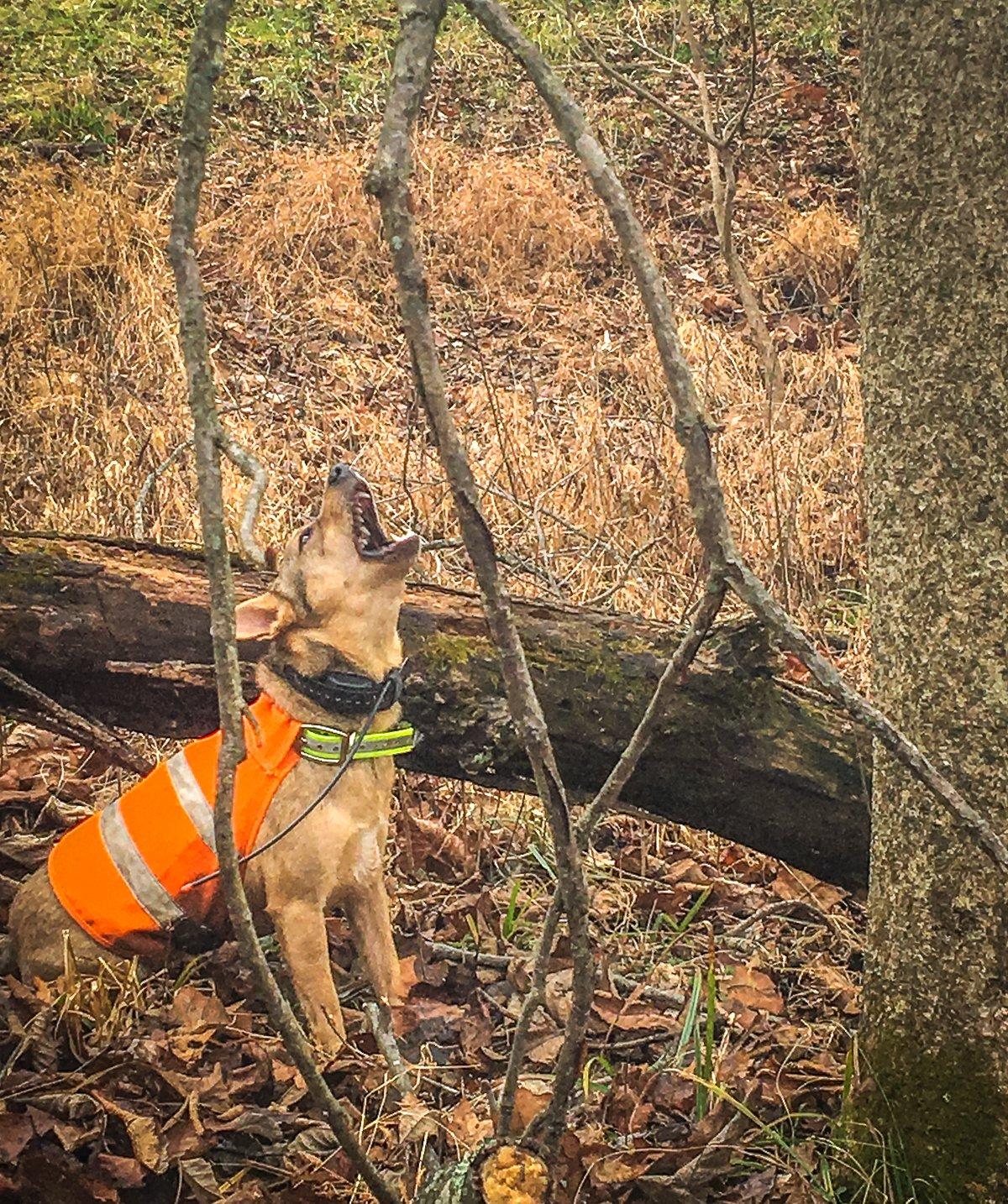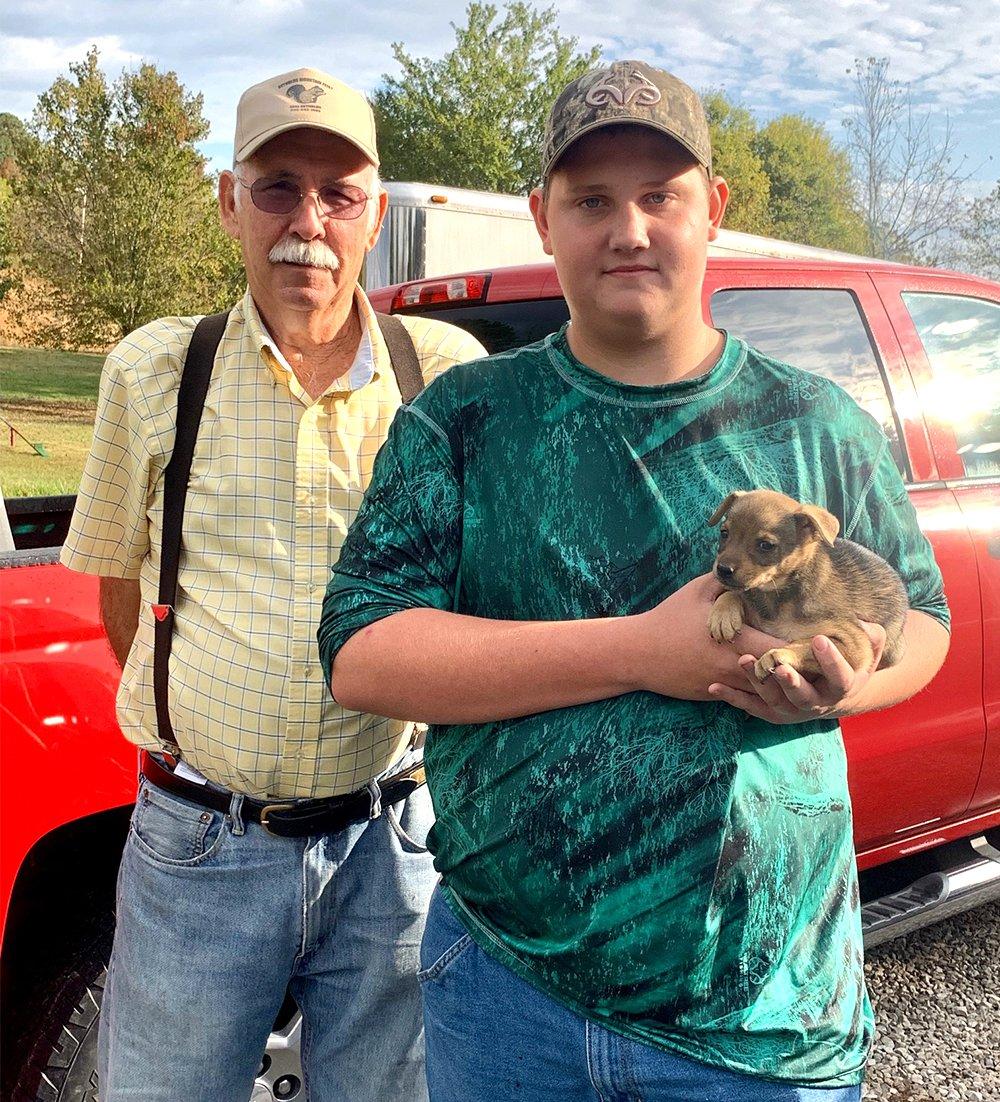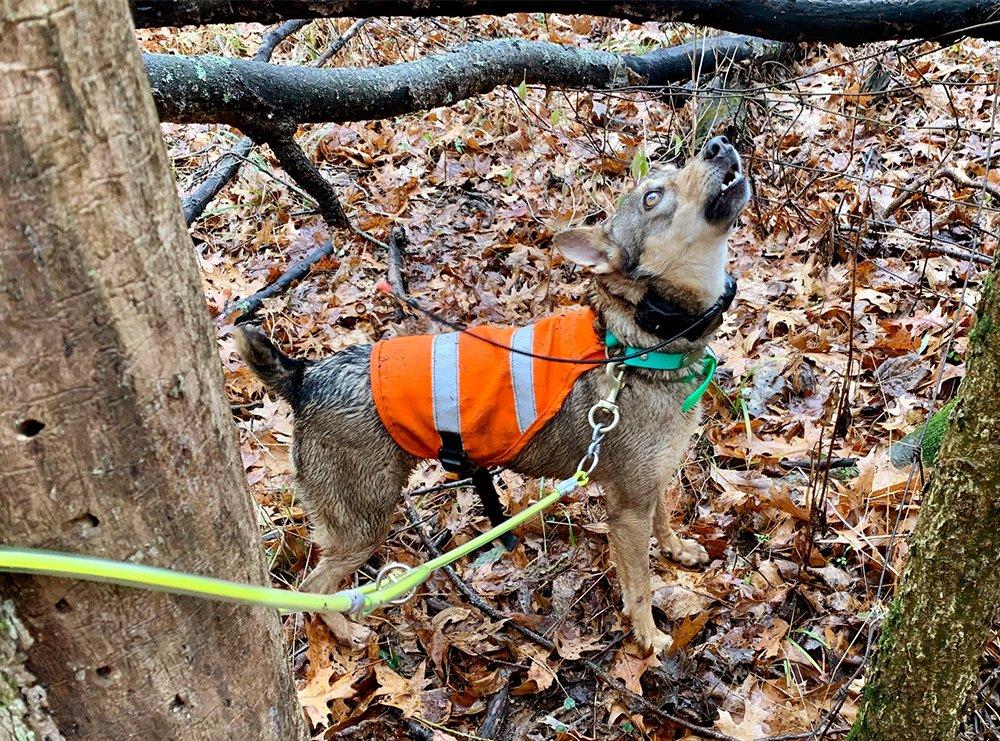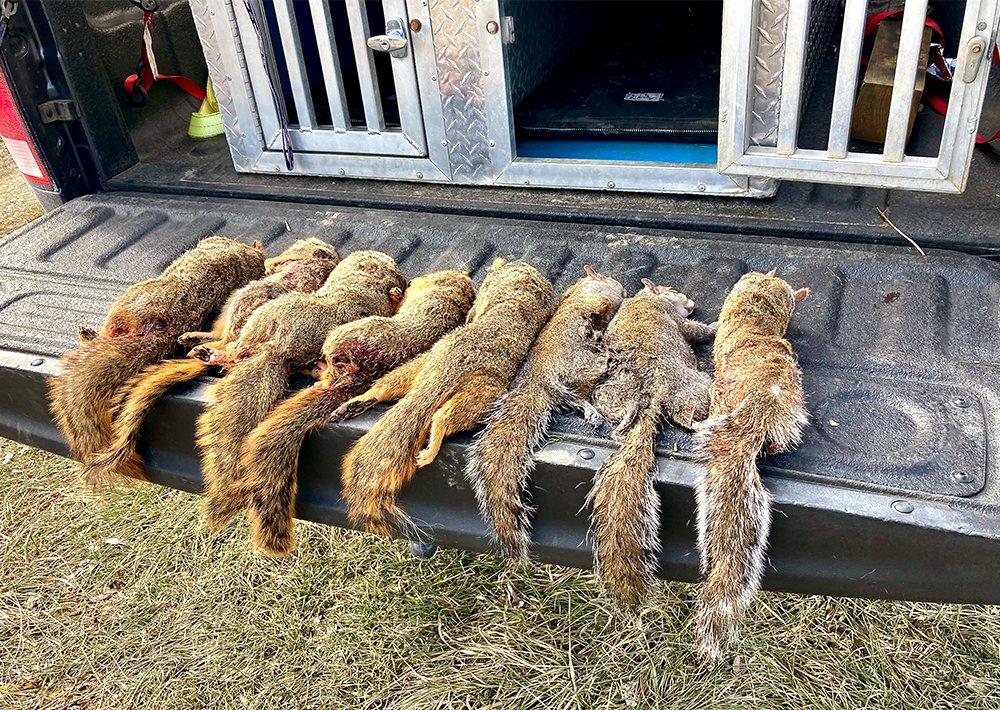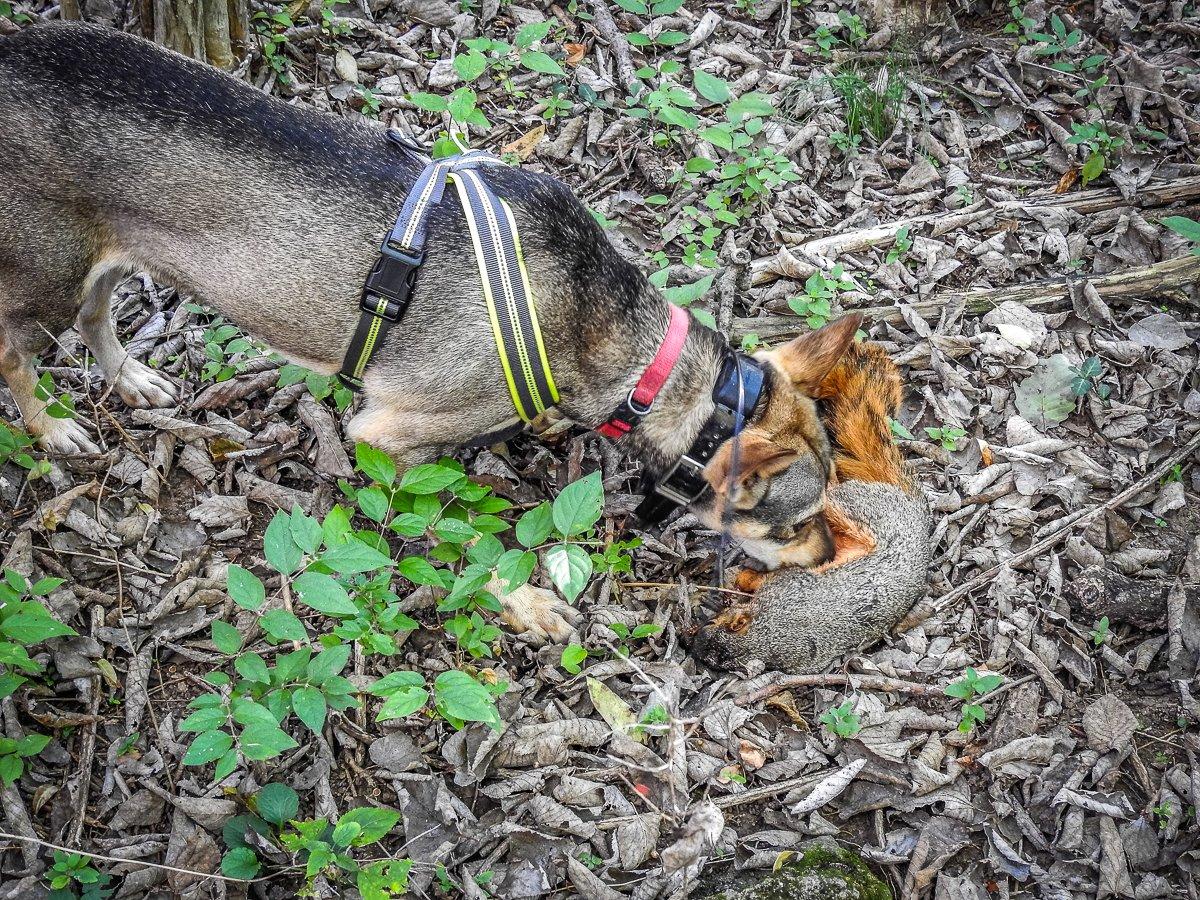Some say a squirrel dog is found, not made, but even a good dog can be ruined by these training mistakes
Many veteran hunters say a good squirrel dog is born with hunting in its blood, and all you need to do to have them treeing like a pro is nurture that instinct along. But even a good dog can develop bad habits, and sometimes those habits are created by trainers with good intentions. What sometimes seems like a good idea to help a pup learn to hunt can often set one back. If you are currently training a squirrel dog, or thinking about doing so in the future, here are some pitfalls experienced squirrel dog breeders and trainers say to avoid.
1. Moving Too Fast
Jessie Luther, owner of Luther's Feist, says that one of the main problems he sees with hunters training squirrel dogs of any breed is that they expect too much from them too early. The dog owner needs to realize that their pup is young and should be treated a bit like a child. Take small steps and keep things fun for both the hunter and the pup," Luther says. "Don't expect a young pup to track and tree squirrels on their first trip to the woods. Or even their first several. Instead, make trips to the woods about learning things."
(Recipe: Slow Cooker Squirrel Tacos)
Earl Reynolds, originator of a line of feist squirrel dogs known across the country for their hunting ability, seconds that notion. I never get onto a pup when it sight chases a rabbit or trees a bird. It's just the hunting instinct in them. In fact, I like it when a young pup trees a bird and starts barking and searching up in the tree for it," Reynolds says. "Those are skills that will serve it well down the road when it figures out that squirrels are the game you're after. And don't worry, they'll figure it out when they see your excitement when they do eventually tree a squirrel."
Luther suggests using that early time to work on basic commands like sit, stay, come, and quiet that will serve the dog well its entire life. Reynolds adds that in the woods, on a first squirrel hunt, isn't the time to introduce a young pup to gunfire. Work on that at home, starting quiet and working up. Do it with something the pup likes, like feeding time, he says.
2. Making It Too Easy
It's common practice among some dog trainers to trap squirrels for young dogs to tree. They even build wire tubes for the squirrels to run through as the dogs chase them. Both trainers say this is fine a few times, but it can be overdone.
Showing a pup a caged squirrel too many trips in a row will make it think that all squirrels should be that easy and they don't have to look for them, Reynolds says.
You have to let them know that woods time is work time, Luther adds. Once they know what a squirrel is, wear out a couple pairs of boots by taking them to the woods as often as possible to let them find and tree squirrels on their own. Showing a pup a caged squirrel or squirrel hide over and over makes them lazy.
Another technique often overused by hunters is to run a pup with an older, more experienced dog. That's fine for a few hunts; the pup can learn by watching the older dog work and trailing along, even if the pup isn't hunting on its own," Reynolds says. "But doing that too many times without hunting a young dog by itself will just teach a dog to follow and not hunt. After you've hunted a few times with an experienced dog, get the pup out in the woods by itself so it can put what it learned to work."
3. Shooting Too Soon
Sure, the goal of a squirrel hunt is to kill a few squirrels for the dinner table, but both trainers caution against shooting squirrels that you might see before the dog does, or shooting a treed squirrel immediately over a young dog.
Training the pup should be the goal early on, even more than killing squirrels, Reynolds says. Don't shoot squirrels out if you see them before the dog does. Instead, position the dog and make a fuss to draw its attention to the squirrel. Once the dog has seen the squirrel and started barking, then it's time to shoot the squirrel out as a reward. Don't shoot a squirrel if the dog isn't barking, he continues. "Shooting a squirrel over a silent dog might teach them to be the best tree dog in the woods but if they don't bark, you won't know it. When your young dog does tree, don't be in a huge hurry to shoot. Talk to the pup, encourage it, let it know you are just as excited as it is to see the squirrel, then shoot it out when the dog is completely focused on the game.
(Recipe: Garlic Parmesan Fried Squirrel)
One trick many trainers use to teach a dog to bark is to tie the dog to a tree by its lead. Then take a freshly killed squirrel and tease the pup with it. Let the dog mouth the squirrel, and then take it away. Hang the dead squirrel from a tree limb just out of reach. When the pup barks, get excited, encourage it to do it again. Once the pup is barking loudly, release it from the tree and let it grab the squirrel. Now is the time for lots of praise.
4. Too Much Shock Collar
A shock collar can be a valuable tool for a dog trainer, but overuse of a collar, or any use at all on an inexperienced young dog, is one of the surest ways to ruin a dog, especially a young pup. I've seen too many dogs that are afraid to hunt because their owners hammered them with a collar every time they didn't do something the trainer thought they should, Luther says. Think about it, would you want a shock every time you didn't perform a task exactly right when you were just learning to do something new? Neither does your dog. Eventually, the dog will learn to equate being in the woods with painful stimulation.
Negative experience can actually cause a dog to regress in its training. I'm working with a young dog right now that was treeing squirrels on a daily basis. One day, she was on tree and got against an electric fence. It got her pretty good. It's been three months now since it happened and she hasn't treed a squirrel since, Luther says.
While a shock collar might not be a valuable tool for training a squirrel dog, a tracking collar is. Gone are the days of listening for a bell or walking through the woods wondering where your dog went. A good tracking collar like the Sportdog Houndhunter lets you keep up with the precise location of your dog from up to 2 miles away. The collar also gives you the option of no shock vibration or tone to get your dog's attention without causing pain.
(Don't Miss: 10 Tips for Training a Squirrel Dog)
5. Giving Up Too Soon
Reynolds notes that no two dogs develop on the same schedule. I've had dogs out of the same litter, even, that didn't progress at the same speed. Some pups seem to get it at an early age, and for some it takes months, or even a year or two, he says. Don't leave a pup in the kennel and expect it to start treeing first time or two out. Wear out a pair or two of boots in the timber. Be patient and don't give up on a pup, some don't start treeing until a year old or well past.
If a dog comes from good stock, it will have the ability to hunt. All it needs is the know-how. That will come with experience. One day, the right squirrel will run in the right place in front of the dog and everything will come together.
(Don't Miss: How to Squirrel Hunt with Dogs)

